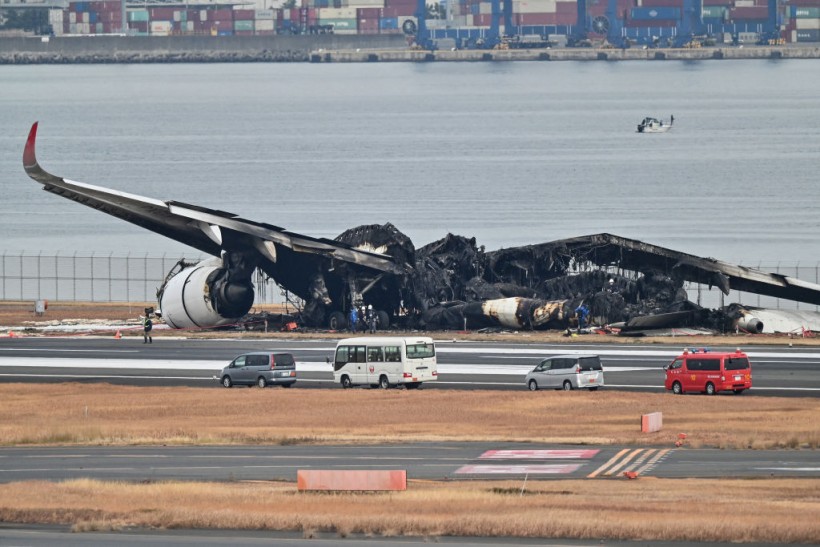After Japan Airlines (JAL) Flight 516 collided with a Japanese Coast Guard Bombardier Dash 8 earlier this week, the 379 passengers and crew onboard the burning Airbus A350 only had 90 seconds from the moment the plane came to a full stop to get out.
On Tuesday (January 2), it took the crew 18 minutes to get the passengers out and safely accounted for, which everyone involved called a "miracle."
Only the five crew members of the Japanese Coast Guard plane perished in the incident.
Crew Training Credited for Swift Evacuation
Reuters reported that Japanese authorities are beginning to reconstruct the scene of the incident based on crew and passenger accounts as part of the investigation on the matter. Initial findings reveal that the crew followed emergency procedures by the book, especially by keeping passengers as calm as possible in getting out of the burning plane.
Flight 516's crew quickly owned the situation by making visual checks of the plane's interior and exterior and decided which of the eight emergency exits were safe to use. They then used short, direct commands such as "Leave your luggage" and "not this door," officials added.
Some of the passengers interviewed at the Haneda Airport late on Tuesday credited the swift evacuation drill with saving their lives.
"I heard an explosion about 10 minutes after everyone and I got off the plane," 28-year-old Tsubasa Sawada told reporters. "I can only say it was a miracle, we could have died if we were late."
Emergency protocol stipulated that the crew must have permission from the cockpit to open any emergency exits. It was said that the captain himself stood near the two exits in the front and personally approved the evacuation.
However, the third safe exit in the rear could not be cleared because the communication systems aboard had been affected by the fire. JAL said that the crew at the back made the correct decision to open the emergency exit even without instructions from the cockpit.
According to Japanese officials, all cabin attendants undergo training once a year on evacuation procedures and simulating various scenarios, including what to do when they cannot communicate with the cockpit.
Read Also: Japan Airlines Plane Catches Fire in Tokyo's Haneda Airport

Airbus: JAL Made a 'Textbook Evacuation'
After ensuring that all passengers were out of the plane, the pilots and crew completed the evacuation at 18:05 local time (09:05 UTC), 18 minutes after landing.
JAL officials did not know how long the process took from the time the plane came to a complete stop. It was also not immediately clear what portion of the 18-minute operation was spent physically getting passengers down the slides, but safety experts said interviews with passengers would be examined worldwide to help shape future evacuation procedures.
The crash was the first significant accident involving the Airbus A350 - one of Europe's long-haul jets - which has been in service since 2015. It was also the first time a passenger plane mainly built from lightweight carbon composites was gutted by fire.
The A350-900 was certified for a full load of up to 440 passengers to be evacuated within 90 seconds with only half of the exits usable.
"The JAL cabin crew should be highly commended for their textbook evacuation," an Airbus representative said.
CBS News transportation safety analyst Robert Sumwalt added that a lot of factors contributed to the successful evacuation of all passengers and crew on board, including the "crash-worthiness of modern jetliners" and the fact that the plane's hull did not burn as quickly as previous aircraft.
Related Article: 5 Japanese Coast Guardsmen Dead After Plane Collides with JAL Commercial Jet









